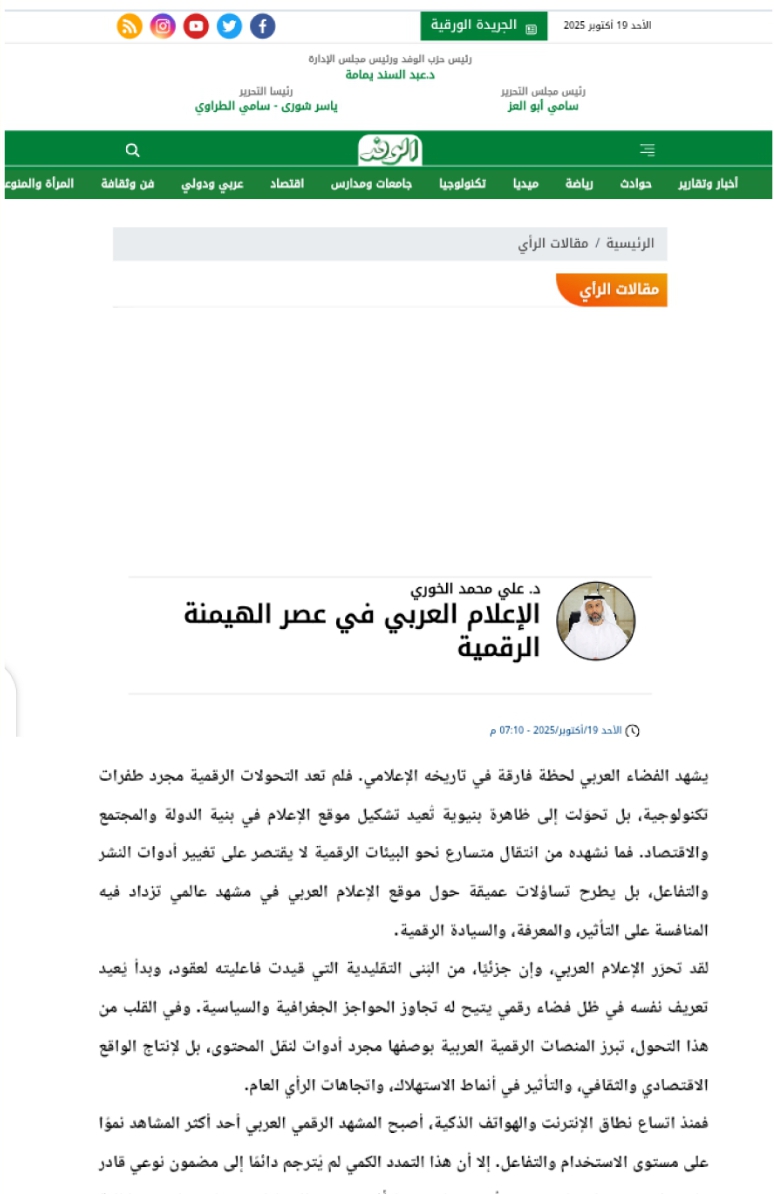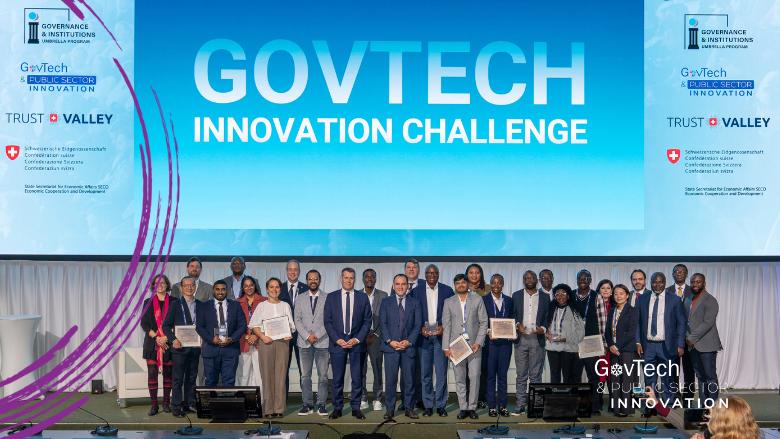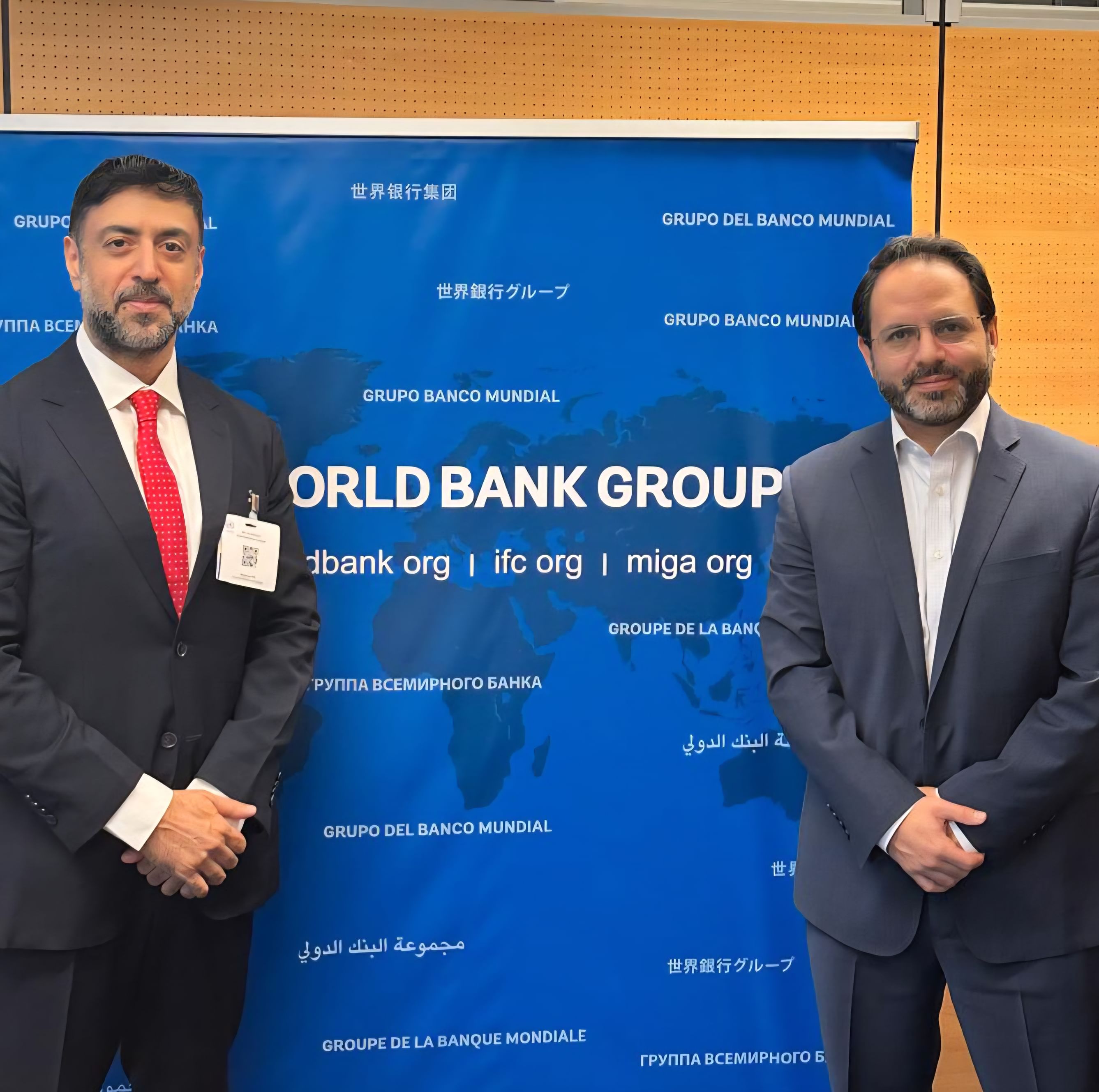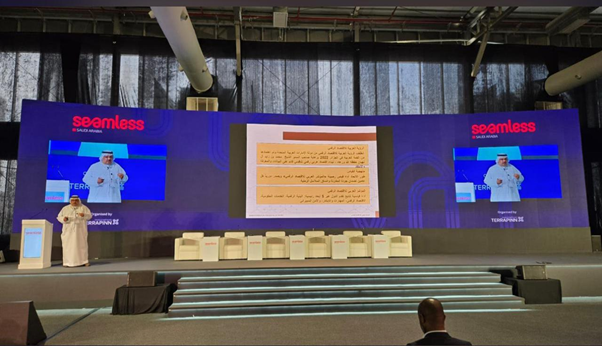Source: Al-Wafd Newspaper
Prof. Dr. Ali Mohammed Al-Khouri
The Arab world is witnessing a pivotal moment in its media history. Digital transformations are no longer merely technological breakthroughs; they have transformed into a structural phenomenon reshaping the media’s position within the structure of the state, society, and economy. The accelerating transition we are witnessing toward digital environments is not limited to changing publishing and interaction tools; it also raises profound questions about the position of Arab media in a global landscape characterized by increasing competition for influence, knowledge, and digital sovereignty.
Arab media has been liberated, albeit partially, from the traditional structures that had limited its effectiveness for decades, and has begun to redefine itself in a digital space that enables it to transcend geographical and political barriers. At the heart of this transformation are Arab digital platforms, not just tools for transmitting content, but also tools for producing economic and cultural reality, influencing consumption patterns, and shaping public opinion.
Since the expansion of the internet and smartphones, the Arab digital landscape has become one of the fastest growing in terms of usage and interaction. However, this quantitative expansion has not always translated into qualitative content capable of empowering Arabs with the tools to understand and influence their public sphere. Herein lies the major dilemma: How can we transition Arab digital media from a state of reception to a state of action, and from superficial interaction to strategic development?
Remarkably, global platforms, such as TikTok, have provided a model for structuring a digital platform that transcends its mere entertainment offering and becomes a cross-border economic and political actor. The platform launched in China but established itself in the American and European markets, reaching over 700 million monthly active users by 2020, including 40 million in the United States alone. This growth did not come through traditional frameworks for disseminating content, but rather through reprogramming entertainment itself, presenting it as the language of the age and a key to accessing the consciousness of new generations.
This model confirms that any digital platform has the potential to transcend national borders if it possesses the vision, the capacity for innovation, and the skill to craft a digital discourse that intersects with the cultural and social contexts of its users. Perhaps this lesson should be at the core of any Arab project to create a digital platform capable of expanding Arab presence globally, not as a reaction to Western or Eastern digital hegemony, but rather as a conscious choice to build a digital future with cognitive and value sovereignty.
In this context, Arab platforms have emerged in recent years, carving out their own niche, such as Noon in e-commerce, Careem in smart transportation, and Abjad in cultural content. These platforms have contributed to creating job opportunities, empowering entrepreneurs, and opening new windows to the non-traditional economy. However, this success, while significant, remains confined to individual models with limited impact at the overall structural level.
Ironically, the size of the Arab digital media market remains far below its true potential. With more than 400 million Arabic speakers and high levels of internet usage in the Gulf and North Africa, the percentage of Arabic content online remains less than 3%, according to some estimates. This weakness in the Arab digital presence is not due to a lack of resources, but rather to the absence of an intellectual architecture that frames digital media as a platform for development and cultural and economic sovereignty.
The importance of Arab digital media is not limited to the digital economy or e-commerce, but extends to building Arab soft power and re-presenting the Arab narrative to the world. Just as China has been able to integrate its digital projects into its geopolitical vision, Arab countries can re-present themselves to the world through a digital discourse that expresses their interests and values and addresses new generations in their own language and with their own questions, far removed from the stereotypes perpetuated by global media platforms with their own vested interests.
Despite all this potential, challenges remain. The lack of a robust digital infrastructure in some countries, the uneven level of investment in technical education, and the lack of clear legislation to protect digital rights are all factors hindering the growth of Arab digital media and its transformation into a true economic driver. Furthermore, the individualistic tendency in platform development and the lack of regional integration render each successful experiment an isolated project, rather than the nucleus of a broader regional model.
The future, then, is not built through separate projects, but rather through an integrated vision that recognizes that digital media is no longer marginal, but rather an integral part of the economy, politics, and culture. Technological investments must intersect with political will, educational policies with media projects, and creative content with digital infrastructure, in a cross-border Arab digital renaissance project.
In conclusion, it must be noted that digital voice is no longer an extension of the media; it has become, in and of itself, an expression of existence. Those who do not possess it will be written about rather than written about themselves. Unless Arab platforms capable of influence are built, we will remain passive recipients, consumers of concepts and perceptions not of our own making. The future will not wait for the hesitant, and those who do not enter the battle of digital existence today will find themselves tomorrow on the sidelines of a new digital history. Therefore, the issue no longer stops at the boundaries of building media platforms; it has become a struggle over who possesses the ability to shape collective consciousness and direct the imagination of societies toward a future that serves their agenda and priorities.












